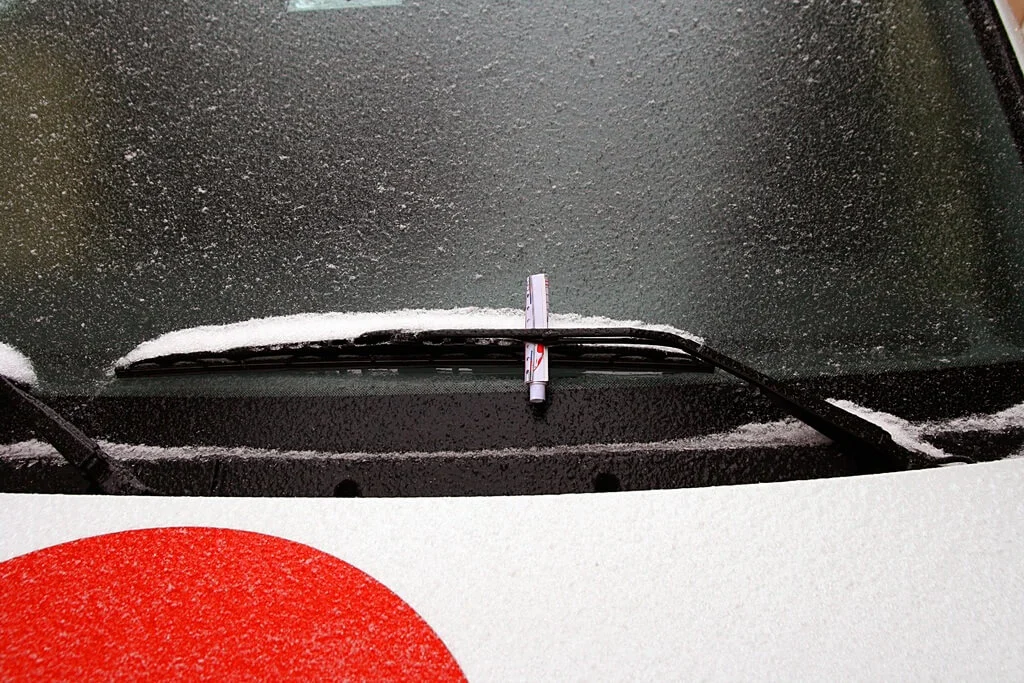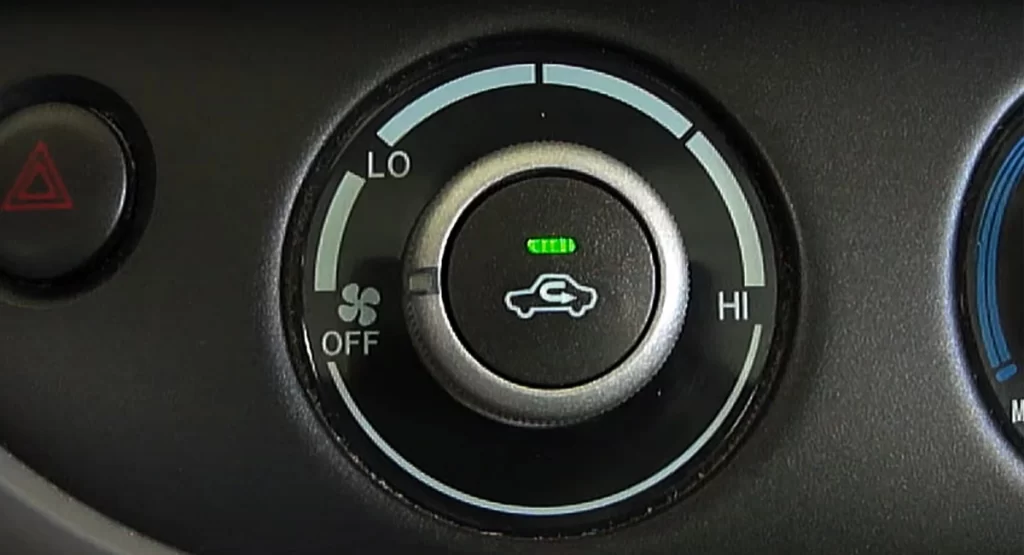Is it normal for ice to form on the inside of your windshield? What can you do to stop it? There are some reasons why ice forms on your windshield. Read this article to learn the reasons and prevent future occurrences. The inside of your windshield might be wet and glistening with frost. Find out how to fix it, too. It’s a common problem, but it’s not the end of the world.
In this article we discuss why does ice form on inside of windshields and all the other relevant things that you need to know about fixing the problems relating to ice and moisture formation inside the windshield.
Is it normal to have ice on the inside of windshield?
Despite the fact that it is unusual for your windshield to get ice during a warm day, it can happen to you. If you’re running late and need to get somewhere quickly, you’ll find ice on your windshield a pain. Here are a few ways you can remove it. Wet rags and handwarmers may work, but you run the risk of causing more damage.
First of all, you need to know the causes of ice on your windshield. Ice on the inside of your windshield occurs due to water vapor. Water vapor is brought inside by snow on your clothing or shoes. When the car warms up, the water vapor in the snow escapes and condenses on the inside of your windshield. This is one of the major causes of ice on your windshield.

Another common cause of ice on your windshield is a bad ventilation or drainage system. This could lead to an icy windscreen. Poor ventilation or a leaking air conditioning system may be the culprit. Make sure that any obvious moisture source is fixed first. If this doesn’t work, you could try using WD-40. However, WD-40 may not be effective if you don’t have a red directional spray straw.
How do I stop frost on the inside of my windshield?
If you have ever had to deal with frost on the inside of your car windshield, you know how frustrating it can be. There are many ways to prevent frost from forming on your windshield, but none of them can eliminate it entirely. You can do your part by keeping the interior temperature of your car at a comfortable level. Adding a desiccant pack to your car can also help.
Keeping your car dry is essential to preventing interior window frosting. This process is initiated when water vapor condenses in the air. When you park your car in cold weather, snow melts on the ground and releases water vapor.
When the car cools, this water vapor freezes inside the windshield. To prevent interior windshield frost from forming, keep your car well-ventilated and open windows to allow water vapor to escape.
Another reason why frost forms on your car window is condensation of water vapor. This water vapor is brought into your car on your clothes and shoes.
As your car heats up, the snow begins to melt. As this melted snow cools down, it releases water vapor into the air, and eventually condenses on your car’s windshield. There are several ways to fix this problem.
Some related FAQs about “Why Does Ice Form on Inside of Windshield”
Why is the inside of my windshield wet?
If you have a vehicle that experiences condensation on the inside of the windshield, it’s probably because of the relative humidity in the air. If your vehicle is in the shade, the air will warm up more slowly, which means that condensation will be more likely to occur.
On the other hand, driving in the sun will help the glass to dry naturally. Regardless of the cause of condensation, you can take these steps to minimize the problem.
The cause of condensation is due to a difference in the temperature of the glass and air. Cold air meets warm moist air and condenses.
This results in a buildup of moisture on surfaces, which makes windows fogged. One solution is to turn off the heat in your vehicle. You may also notice a film at the base of your windshield. This is called condensation, and it can be frustrating to remove.
Condensation inside the windshield overnight. why?
When you drive your car, you may have noticed condensation on the inside of your windshield. The problem can be frustrating to deal with. It can affect your visibility while driving, but thankfully, there are solutions available. Here are a few of them:
It’s important to know what causes condensation on the inside of your windshield. The cold outside air meets the warmer interior temperature. While the temperature is cold, moisture from your breath can also cause condensation.
Other causes of condensation may leave you stranded if you aren’t prepared. Fortunately, you can quickly fix the problem. Contact a glass repair shop in your area for more information.
Overnight, condensation on your car’s window is caused by a difference in air temperature between the inside and outside air. This happens when warm, moist air from inside a car comes in contact with a cold surface.

This cold surface causes moisture to condense and turn into actual water. Body heat also causes condensation on the inside of windshields. It’s important to avoid driving a car that is overly misted to prevent condensation.
Should I wipe condensation from windows?
Generally, you can just wipe off the excess condensation from windows, but you must take caution in driving if you see too much of it. It could obstruct your vision.
If you see excessive amounts of condensation on your windows, pull over to a safe location and wait for them to de-mist before driving again. You can also try using high-quality window cleaner or microfiber cloths to remove the dirt.
In the summer, the sun’s heat should evaporate the moisture from your windshield, but it doesn’t always happen this way. If you see ice forming on your windshield or windows, use a windshield water repellent to encourage droplets to run off instead of accumulating.
This will keep your windows from getting fogged up, and your visibility will be better. But if you find that your windshield is too foggy, you should have it professionally cleaned.
You can also try removing excessive humidity from your car by keeping the doors and windows open. Keeping the windows open and letting warm air out will also help. You can also place things in your garage that absorb moisture. Clean your windshield frequently to ensure that you don’t have any microscopic dirt particles on it. These simple tricks will help you prevent frost from forming on your windshield.
Does vinegar stop condensation on windows?
One of the ways to stop condensation on your windows is to spray them with a solution of vinegar and water.
This can be used on a glass surface, mirror, or car window to reduce condensation. It is important to let the vinegar solution sit on the surface for a few hours so that it can dry before using the window again. If you want to use this trick on tempered glass surfaces, you should make sure to allow the windows to dry completely before re-applying the solution.
Constant condensation on your windows can damage your window frames and the area around them. This excess moisture can cause staining and peeling of the wood and plaster around the windows. It can also change the color of your walls.
The paint will also peel off as a result of the moisture. If you do not take action quickly, the problem can become worse. Luckily, there are some solutions that can stop condensation overnight.
Why are my windows so wet in the morning?
If you wake up to wet windows, you’re not alone. Many people wonder the same thing. Morning dew is the most common cause, but it can also be caused by excess humidity.
A broken window seal causes water to condense on the glass. The glass must be colder than dew point to be wet. In winter, this condensation can be so severe that it ruins your day.
The first cause is a high humidity level in the home. Humid air tends to condense on windows because it’s warm. The other cause is cold, thermally inefficient windows.
Fixing windows is another solution to avoiding wet windows. A window covering can help reduce humidity levels. If all else fails, try using extractor fans to remove moisture. You can also use dehumidifiers.
I hope you like the post and gained some useful information regarding the “Why Does Ice Form on Inside of Windshield “. If you have any further questions, please leave a comment below and we will respond with more competent solutions. Also, if you have any questions concerning Why does the transmission shifts hard, take a look at here.
